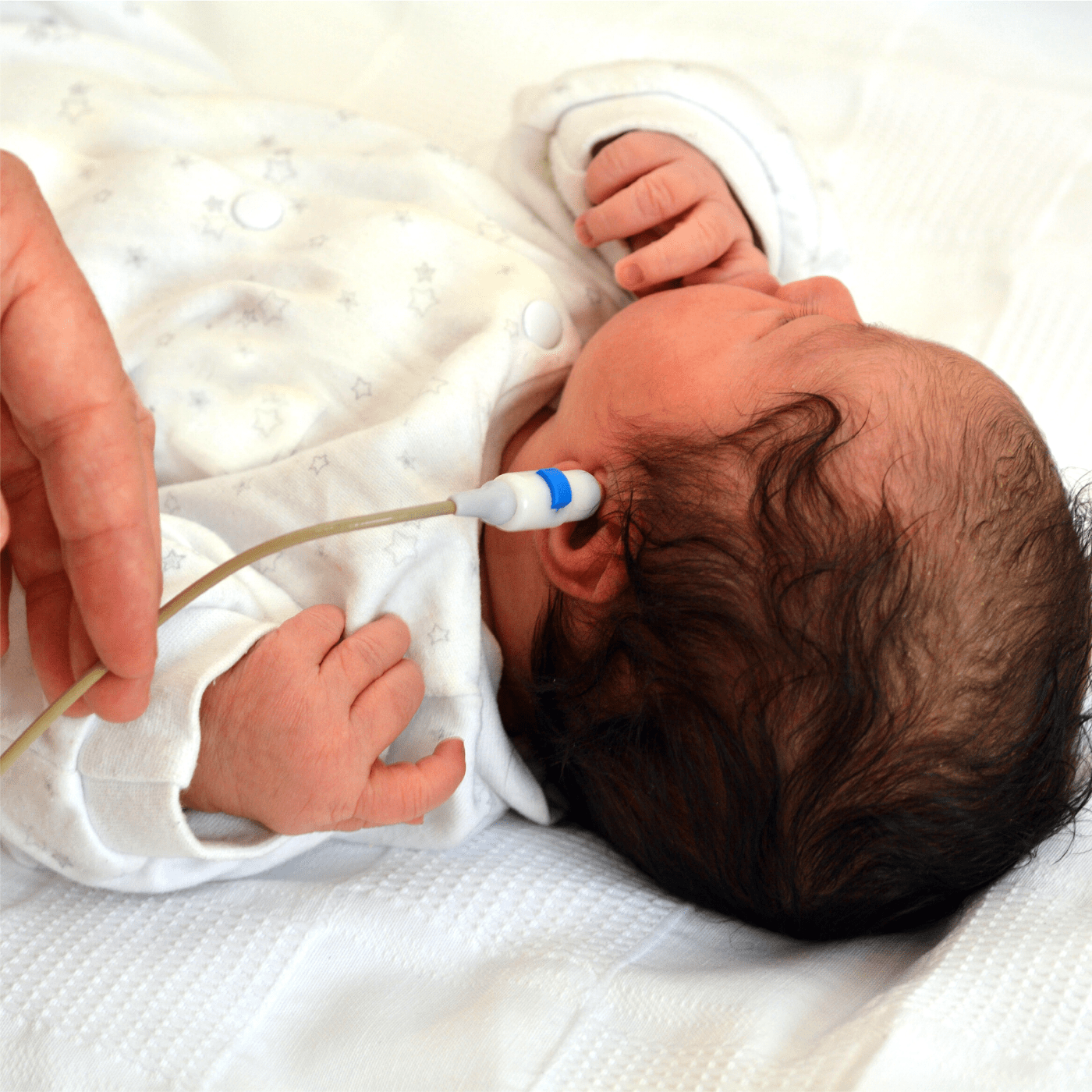
Otoacoustic Emission Screening and is primarily seen in newborn child hospitals. It can observe and disclose the sensorineural hearing loss present in the cochlea of a toddler. The most chosen method to test infants’ ears today is Portable OAE screening. The hearing clinic has the best OAE specialists to handle the infant’s ear-related concerns. Our Otoacoustic Emission team is well trained and has gone through multiple trials of managing the delicate ears of toddlers and their unstable attitudes. So rest assured, your child’s ear examination is now in safe hands.
How is the OAE process performed?
A hand-sized portable screening unit is used to activate the process. The process starts with the placement of a probe inside the toddler’s ear. Its function here is to pass the slow sound to the ear, which the cochlea answers by eliciting the echo sound or Otoacoustic Emission. This sound drifts back to the ear canal by the middle ear, and the screening unit further examines it. Finally, the results after this 30-second Otoacoustic Emission test are out. The result will reflect in the form of referral or pass.
What cochlea produces all sounds during the OAE test?
Four kinds of sounds are produced during the test –
- Distortion product otoacoustic emissions – It is elicited as a reaction to two concurrent sounds having specific frequencies.
- Spontaneous acoustic emissions – These sounds are elicited consistently by the cochlea and take place in 40% to 50% of folks having normal hearing.
- Sustained frequency otoacoustic emissions are elicited as a reaction to a continuous tone and are rarely used.
- Transient otoacoustic emissions – It is generated as an acknowledgment to another sound like clicks or tone explosions
Protocols of an OAE tests
- 1st OAE – Conducting a primary screening at a birth time for both the ears.
- 2nd OAE – The second screening is further done if any child’s ear fails in the 1st screening test.
- ENT specialist – The third alternative is to refer to an ENT specialist as your toddler ear examination fails in the second test too.
- Confirmatory tests – Additional confirmatory tests, such as BERA, are performed for a child who dies the third option.
Faqs
1. What is an OAE hearing test?
The Otoacoustic emissions are the sounds generated by a cochlea. It is performed in toddlers or newborn children to test the status of cochlea functioning & other parts of the ear.
2. What produces OAE?
The Otoacoustic emissions are produced by the hair cells’ outer layer movement. It is further recorded in the ear canal.
3. How is the OAE test done?
The test is conducted by putting a probe inside the ear canal. It transfers the low volume sound inside the ear. The results are defined using the screening unit where cochlea acknowledges via an otoacoustic emission.
4. How accurate is OAE tests?
If the infant is following the test protocols, then the accuracy of the test gets more than 90%. However, if the child is fussy, has fluid in the ears, debris, ear wax, not still, it can lead to inaccuracy in the test results.
5. How do you use OAE?
It is used to detect deafness in the child and partially tells about the hearing sensitivity.
6. How long does the OAE test take?
The test usually takes 30 seconds or less, and the outcomes are exhibited as pass or refer.